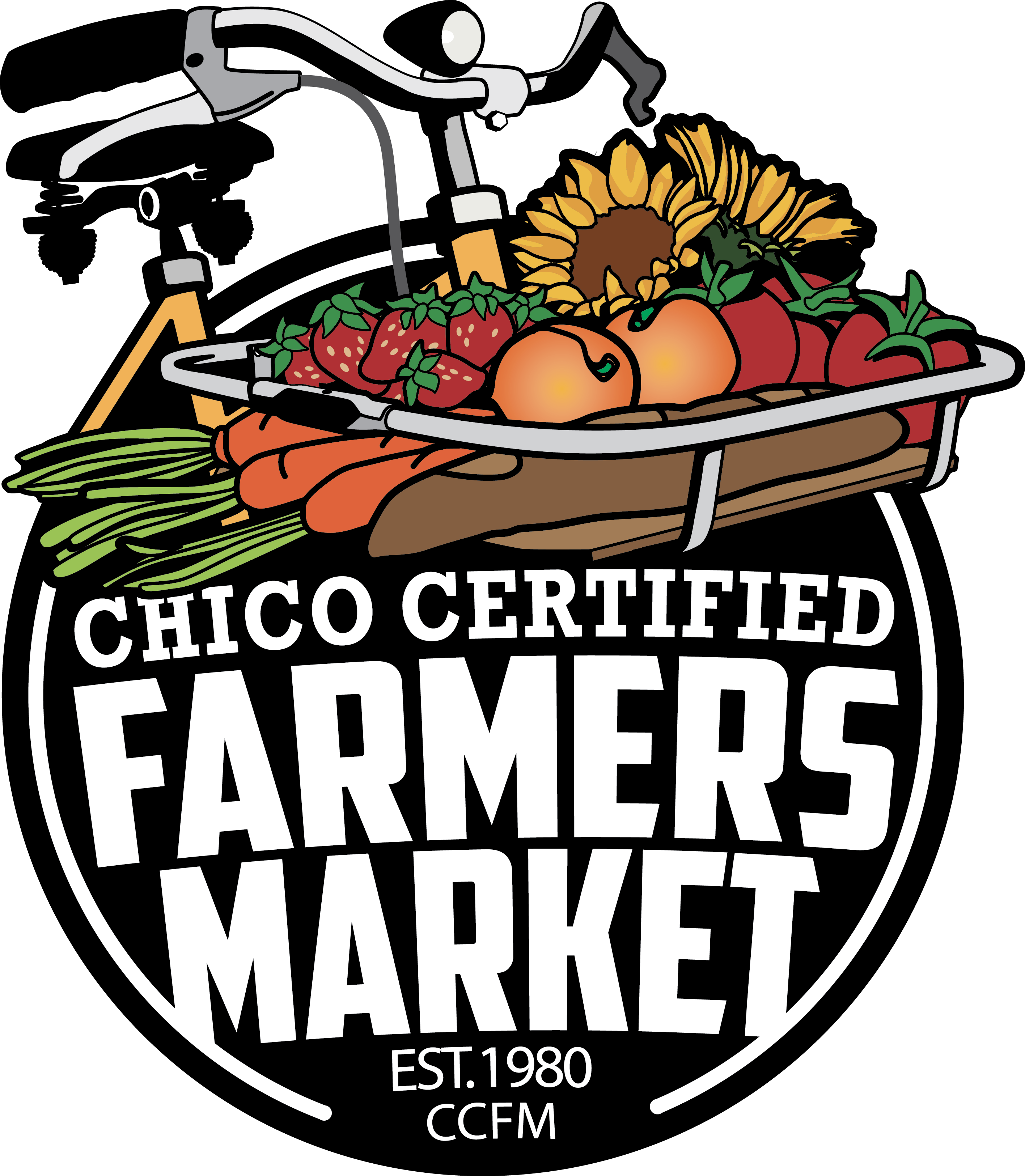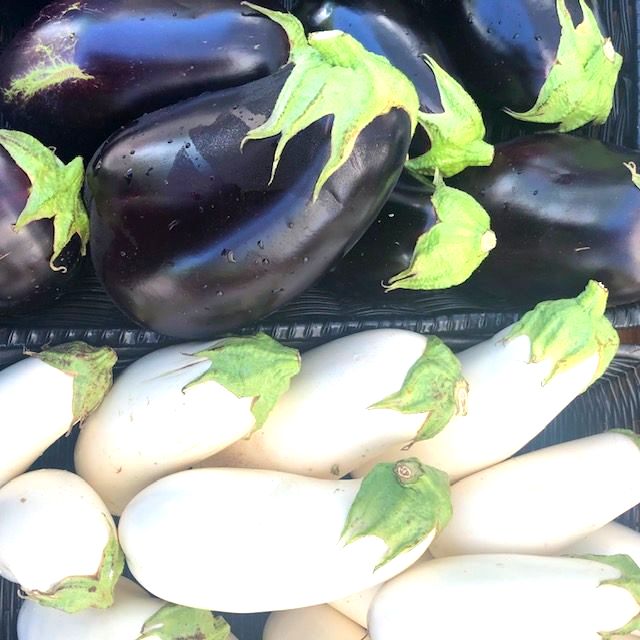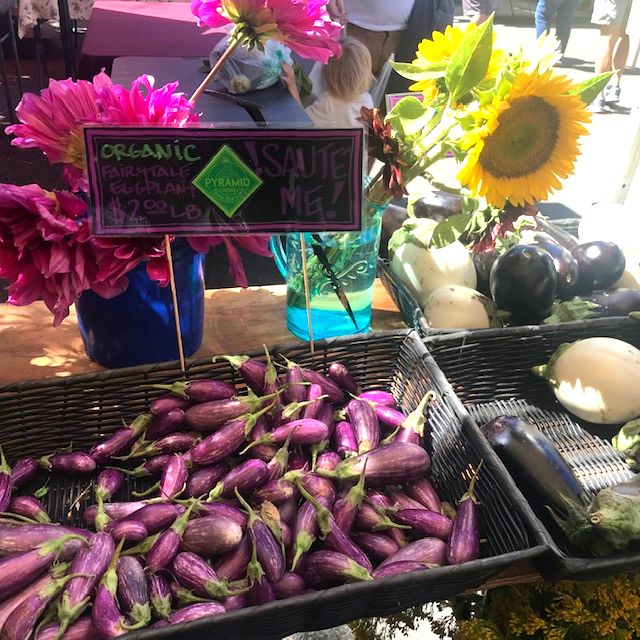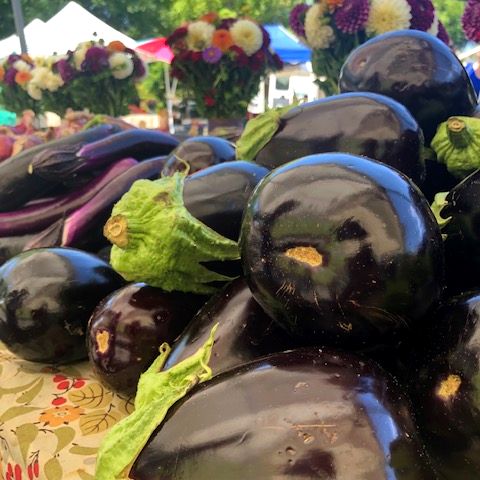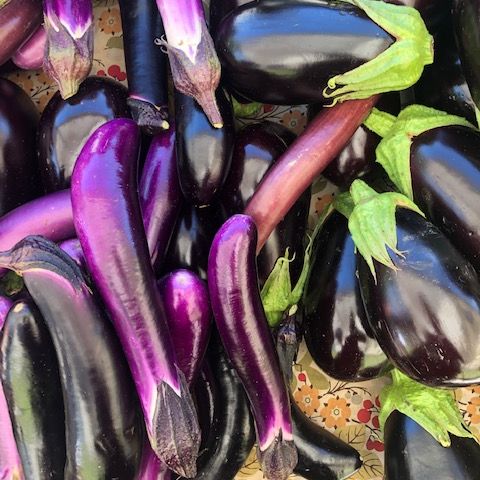High summer means eggplant season! When most people think of eggplant they think of the purple, curvy, hefty guy. You know, the emoji one. But we’re here to tell you that (while we do love that kind!) if you head to the Chico Certified Farmers’ Market right now, you’ll see just how diverse and overwhelmingly large the eggplant family is! These fruits – yes, fruits – come in a wide range of shapes and colors, and are in season at the Market from roughly June to October.
Eggplants are part of the nightshade family along with peppers, potatoes and tomatoes. They were originally named after eggplants found in Europe that resembled an egg in shape and color. Eggplants only became acceptable to eat in the U.S. about 50 years ago – prior to that, folks believed that eating it caused insanity, leprosy and cancer. Fortunately for us, that is not true! Eggplants are actually full of potassium, folate, and flavonoids like chlorogenic acid and caffeic acid which may actually help fight cancer and protect cells from damage!
If you feel a little lost in the eggplant world, keep reading for tips to help you get to know this versatile summer staple a little better! Then head to the market this Saturday and exercise that eggplant knowledge!
- 08baa472 cbd1 4e43 48b3 01c4ac51d33f
- 6a8ca142 c864 b0a1 b0dd cdcf73f24e53
- 55a5a2ed c8d6 ede3 56bc 2c592fcd9326 rotated
A Short, Easy Guide
How to Choose
It is age that causes most eggplant to become bitter, so when selecting look for young, firm fruit that are almost hard to the touch. To test the ripeness, gently press the skin with your thumb. A ripe eggplant will spring back and not leave an indentation. The skin should be shiny and smooth, not wrinkled, and the stems should be green and fresh. Pick one that seems heavy for its size.
How to Store
Whole unwashed eggplant will keep up to a few days in a cool place. Avoid storing in the refrigerator, as this will damage the eggplant’s texture. If you must store in the fridge, store them in the crisper drawer.
How to Prepare
How to prepare an eggplant depends greatly on which kind of eggplant you’re using. They are incredibly versatile, however. Some suggestions: Grill, braise, saute, steam, stir fry, roast, blend, or mash!
- 0cab3da1 9c83 09c5 60d3 28d1dd756d91
- 5e0851c2 ab6e bbfc 270c cc6ffecb0bdf
- 8db56773 81ab 410e 8aa7 5a598e02cb2b
General Varieties
Asian varieties are long and skinny. They’re mild, tender, low in seeds, and quick-cooking whether small or fully grown. The lighter fruits—white, light purple, and ones with lavender streaks—are usually called Chinese eggplant and are especially delicate. The super dark purple fruits are usually called Japanese eggplants. They’re a bit firmer, sweet, and maintain their color better than other eggplants.
Green eggplants are generally sweeter and less bitter than other colors. They come in all shapes and sizes, but the small spherical ones common in Thai cooking are almost as crunchy as apples.
White-skinned eggplants tend to have thicker skins, so you may want to peel them for a more tender texture. They tend to hold their shape when cooked more than the big purple varieties.
Small red and orange eggplants look a lot like tomatoes, and are generally seedy and can be bitter (but not always). Shopping for these can be a bit of a gamble; even the farmers who grow these varieties can’t say if the eggplants will be bitter until they’re cooked, but they sure are pretty!
